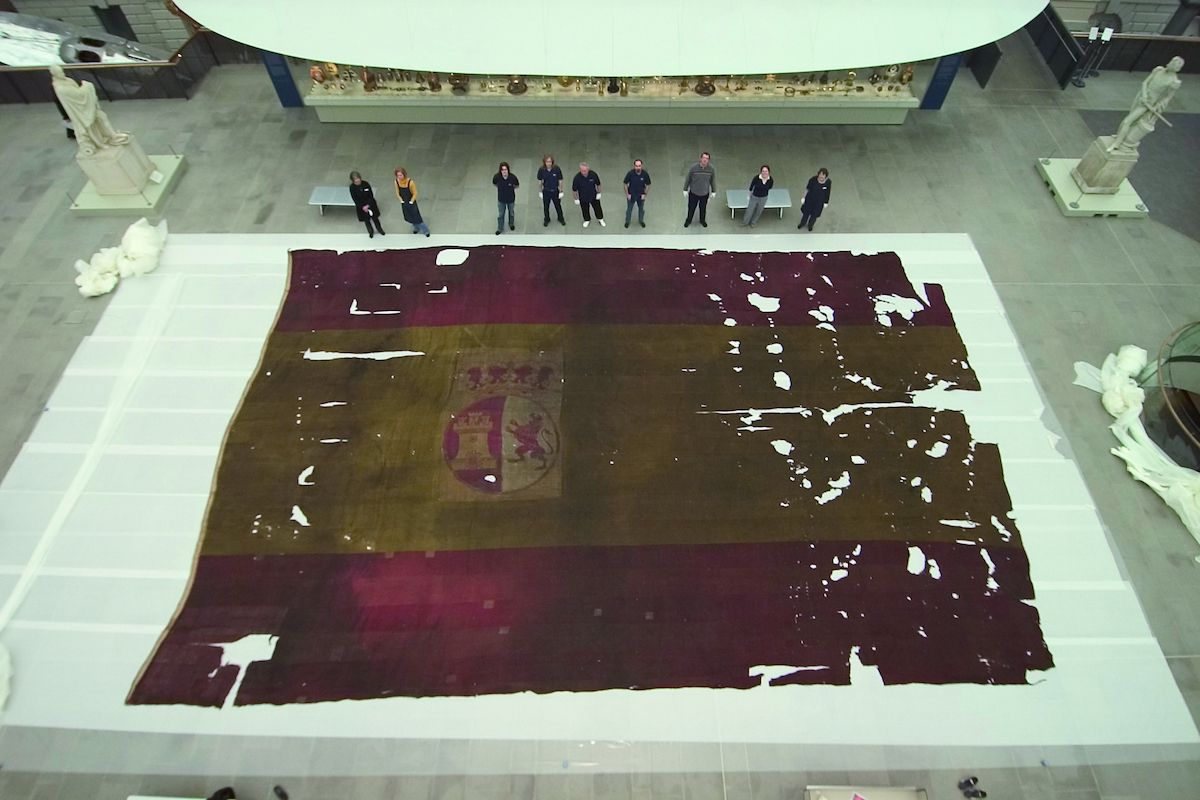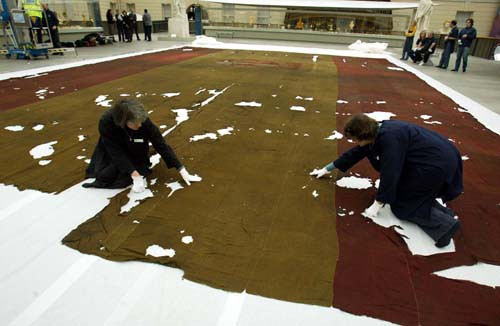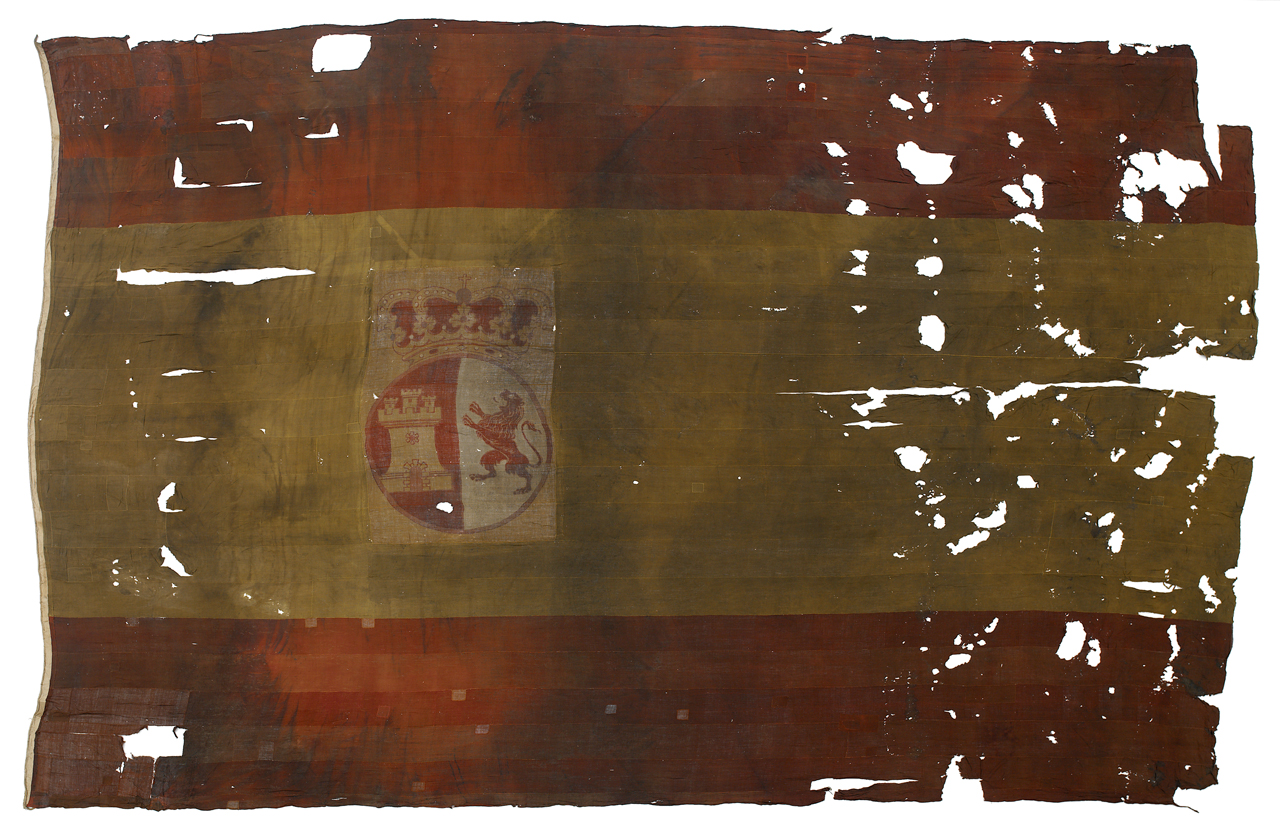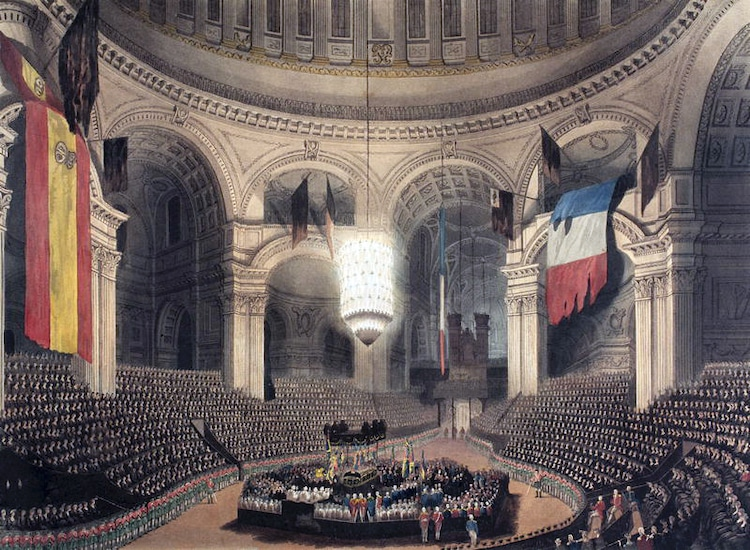The Battle of Trafalgar and the Ensign of the San Ildefonso: A Testament to Naval Supremacy
The Battle of Trafalgar, fought on October 21, 1805, marked a defining moment in history, securing Britain’s unchallenged supremacy as a naval power. Under the brilliant leadership of Admiral Horatio Nelson, the British Royal Navy triumphed over a larger Franco-Spanish fleet, despite being outnumbered in both manpower and firepower. This clash not only demonstrated tactical brilliance but also symbolized the resilience and innovation of the British naval force.
One of the most remarkable artifacts from this legendary battle is the massive ensign flown by the Spanish warship San Ildefonso. This flag, an enduring symbol of Trafalgar's legacy, provides an extraordinary glimpse into the scale and intensity of 19th-century naval warfare.
The Flag: A Marvel of Naval History
Measuring an astonishing 33 feet wide and 47.5 feet long, the San Ildefonso’s flag is a colossal piece of history. Made of wool, it served as the ship’s battle ensign—a flag so large that it could be seen through the dense smoke of cannon fire, ensuring that allies and enemies alike could identify the ship’s status.
TIMES PHOTOGRAPHER RICHARD POHLE
In 2005, to commemorate the bicentennial of the Battle of Trafalgar, Britain’s National Maritime Museum displayed this historic flag for a single day. Its sheer size and preservation challenges make it unsuitable for permanent exhibition, but its significance as a relic of one of history’s greatest naval battles is undeniable.
The San Ildefonso: A Technological Marvel of Its Time
The San Ildefonso was not just any Spanish warship—it represented a bold step forward in naval design. Built in 1785, the vessel was part of Spain’s effort to counter the lighter and more agile ships of the British Royal Navy. With 80 cannons and howitzers, it was well-armed for battle, but what set it apart was its innovative construction.
To enhance speed and maneuverability, engineers replaced traditional heavy oak in the ship’s upper structures with lighter pine and cedar. Iron bolts in the hull were swapped for wooden treenails, reducing overall weight and lowering the center of gravity. Additionally, the ship’s length was kept shorter than usual, a deviation from Spanish naval tradition, to further improve agility.
Despite these advancements, the San Ildefonso fell victim to British tactical superiority. During the Battle of Trafalgar, it was captured by the HMS Defence. Renamed HMS Ildefonso, the ship went on to serve under the British flag—a poignant reminder of the Royal Navy’s dominance.
The Ensign and Nelson’s Legacy
The San Ildefonso’s flag holds an even greater historical connection, having played a role in the state funeral of Lord Horatio Nelson. After the Battle of Trafalgar, Nelson, though fatally wounded during the conflict, was celebrated as a national hero. His funeral, held at St. Paul’s Cathedral in 1806, was a grand affair, with the ensign of the captured San Ildefonso prominently displayed as a symbol of his victory and the British Navy’s prowess.
Horatio Nelson's Funeral by Augustus Charles Pugin, 1806. (Photo: Public domain via Wikipedia)
Battle ensigns like this one were not mere decorations—they were critical to naval warfare. In the chaos of battle, with smoke obscuring visibility, these oversized flags served as vital signals, broadcasting a ship’s continued engagement in combat. As long as a ship’s ensign flew, it was still a participant in the battle, embodying the spirit of resilience and defiance.
A Symbol of Triumph
Today, the San Ildefonso’s ensign is a treasured artifact housed in Britain’s National Maritime Museum. It stands as a testament to the skill, strategy, and bravery that defined the Battle of Trafalgar. The flag’s story encapsulates the drama of the battle, the ingenuity of naval engineering, and the enduring legacy of Admiral Horatio Nelson.
The Battle of Trafalgar remains a cornerstone of naval history, not only for its strategic brilliance but also for the enduring symbols it left behind. The San Ildefonso’s flag, with its immense size and storied past, continues to inspire awe, serving as a tangible connection to an era when naval power ruled the seas.












